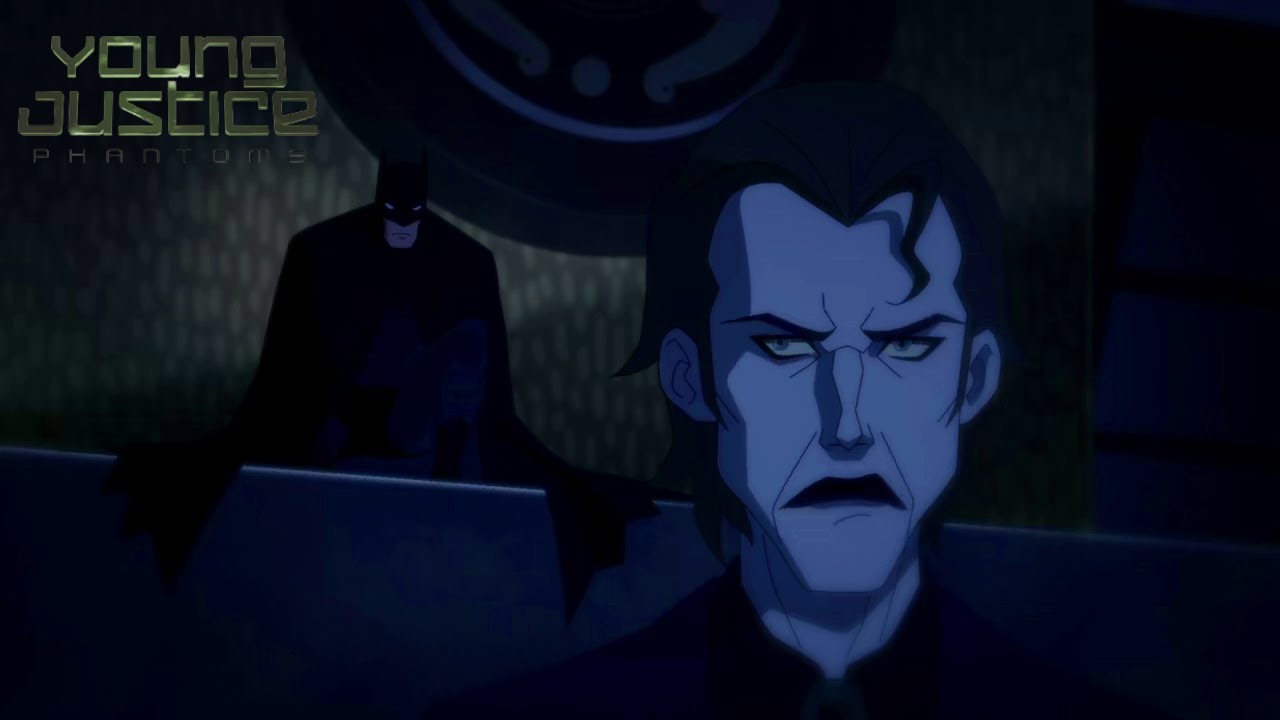This Young Justice: Phantoms review contains spoilers.
Young Justice Season 4 Episode 7
Getting off of Mars was the best thing to happen to Young Justice: Phantoms, and even though it returns there this week, the parallel structure of the episode combined with the show taking on a HUGE story from the comics and making some pretty significant improvements to it, even if it doesn’t quite land in the end.
Plot-wise, not a ton happens this week. Miss Martian, her sister, and J’onn head back to Earth after M’gann cracks her brother’s skull a little and finds out he didn’t know the gene bomb was laced with kryptonite. And Tigress, Scandal, and Onyx (backed by Oracle) crash Santa Prisca to get Orphan out, ending up betrayed by Scandal, saved by Cheshire, and surrounded by the League. But it’s not really the plot that’s a big deal this week.
The modern day action is interspersed with cuts showing us Orphan’s back story. We see the mission that caused her to abandon the League – she was sent to kill the Joker, who was about to Joker gas the United Nations in retaliation for not being clued into the Light’s work, all the way back around season 2. Joker is furious with Vandal Savage for leaving him out of the loop, so he’s going to do some Joker stuff, and Lady Shiva sends Orphan to kill him on behalf of The Light. The Bat family thwarts Joker’s attempted bombing, but in the confusion they lose him. Barbara, still Batgirl, sees someone chasing the clown, runs to stop them, and ends up jumping between a sword and the Joker’s doom, presumably harming Barbara to the point where she ends up in a wheelchair and becomes Oracle.
If this sounds vaguely familiar, it’s because it kind of is: this is Young Justice reworking the seminal Batman story by Alan Moore and Brian Bolland, The Killing Joke. As a standalone, it’s a remarkable piece of craft and storytelling: Bolland is maybe the definitive Joker artist of all time, and Alan Moore needs no introduction or justification. But this story did a hell of a lot more than just stand by itself.
In it, the Joker shoots Barbara Gordon in the spine and sexually assaults her, using photographs of her naked, wounded body to try and drive Commissioner Gordon insane just to prove to Batman that everyone can be driven crazy. This story is one that Moore himself doesn’t really care for, calling it “too nasty, too physically violent” and “put[ting] too much melodramatic weight on a character that was never designed to carry it.” It was also intended to be…at most continuity-adjacent. But it didn’t end up that way.
This characterization of Batman informed the entire Batman canon moving forward (save the Morrison run), and in the hands of less capable creators,often turned him into grim, brooding self-parody. Meanwhile, Barbara was nothing more than set dressing in the story itself, another example of a woman brutalized to further a man’s journey.
Barbara didn’t have any agency to her story at all until a bit later, when John Ostrander, Kim Yale and Luke McDonough brought her into the background of their all-time classic Suicide Squad run, making her a foil to Amanda Waller and turning her into the most prominent hero in a wheelchair in all of comics. And she stayed that way for decades, until an editorial fiat at the dawn of the New 52 made her Batgirl again. The Bat-office is slowly returning her to Oracle status and handing the Batgirl mantle to a batch of new characters (including Orphan! The Batgirls stories are terrific!), but it’s been a long, slow haul.
Young Justice changes that completely around, making Barbara’s choices critical to the action, making her disability the result of self-sacrifice and not fridging and centering Batgirl‘s heroism. This season of the show hasn’t always been successful (and it’s not perfect here – we don’t really know why Barbara cares so much for this new assassin girl at the start, just that she does), but one thing it’s done really, really well is center the women on the team, and I look forward to that continuing.
